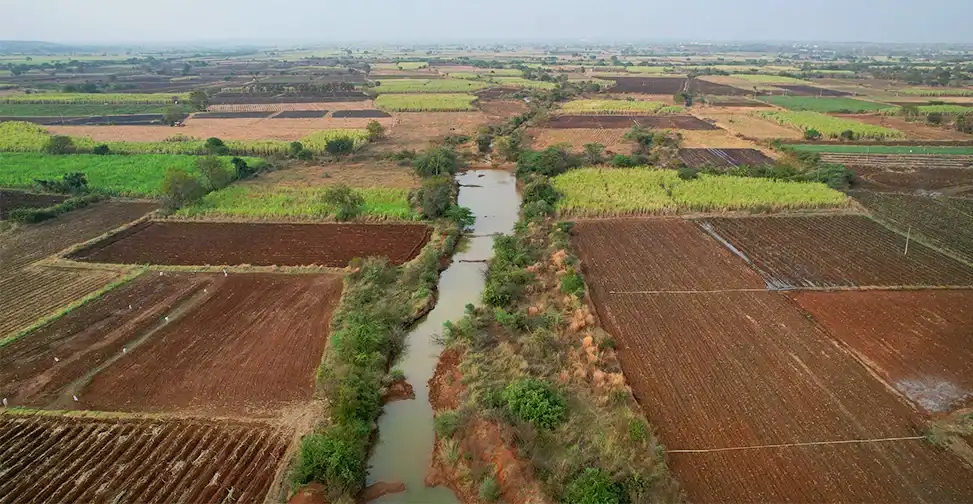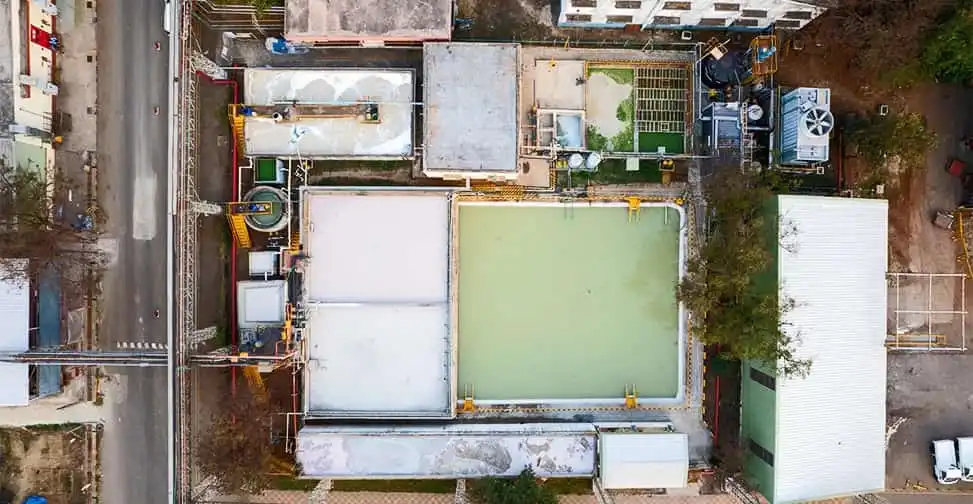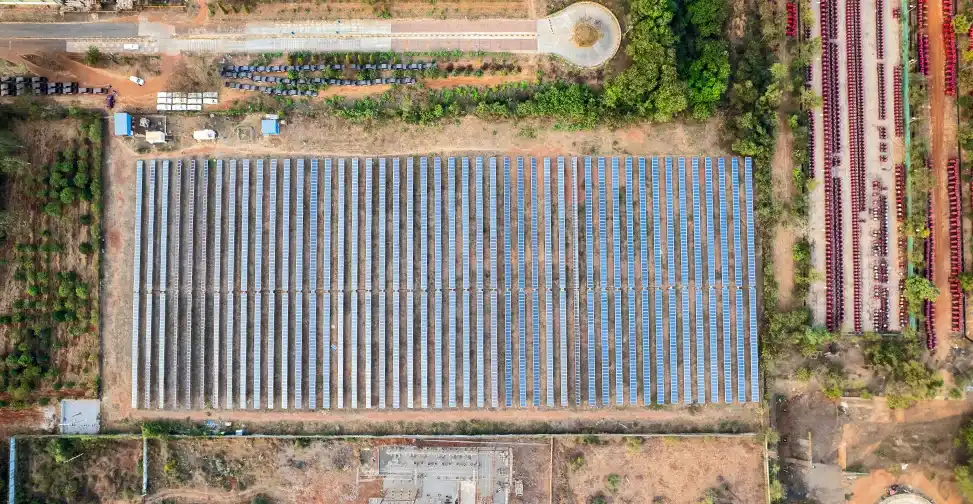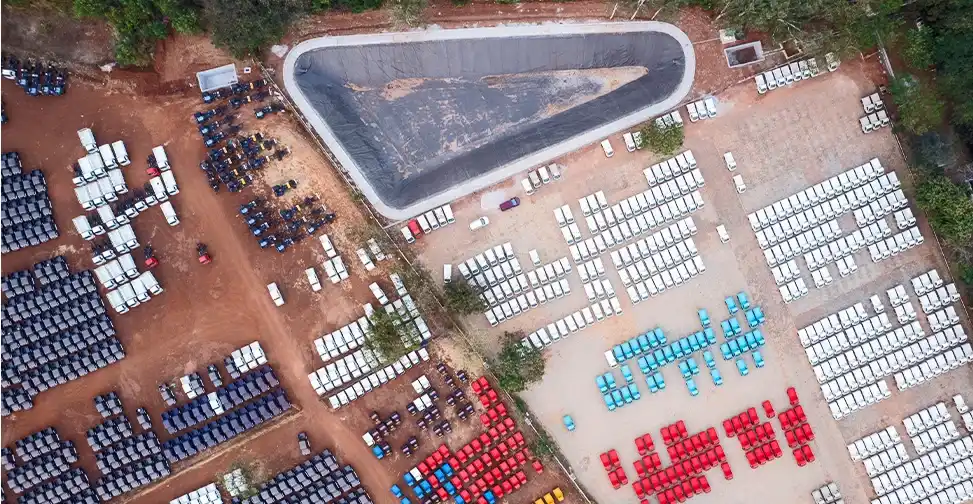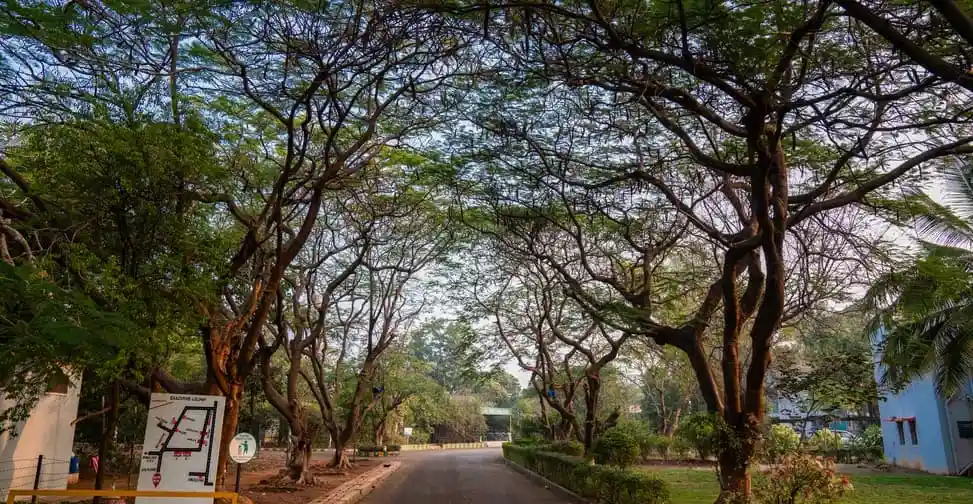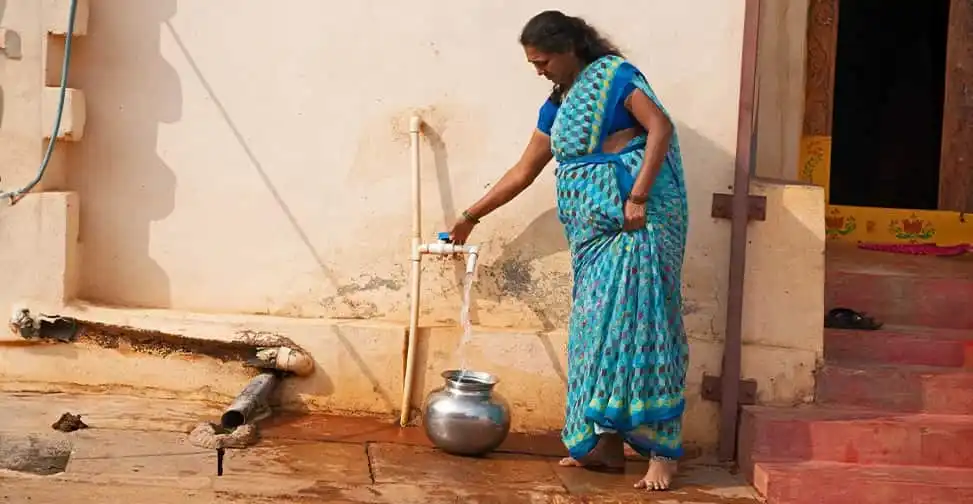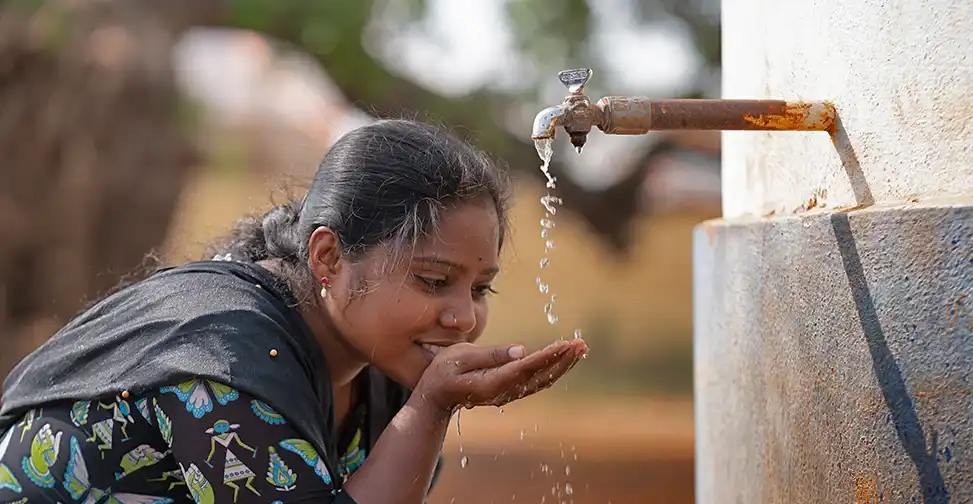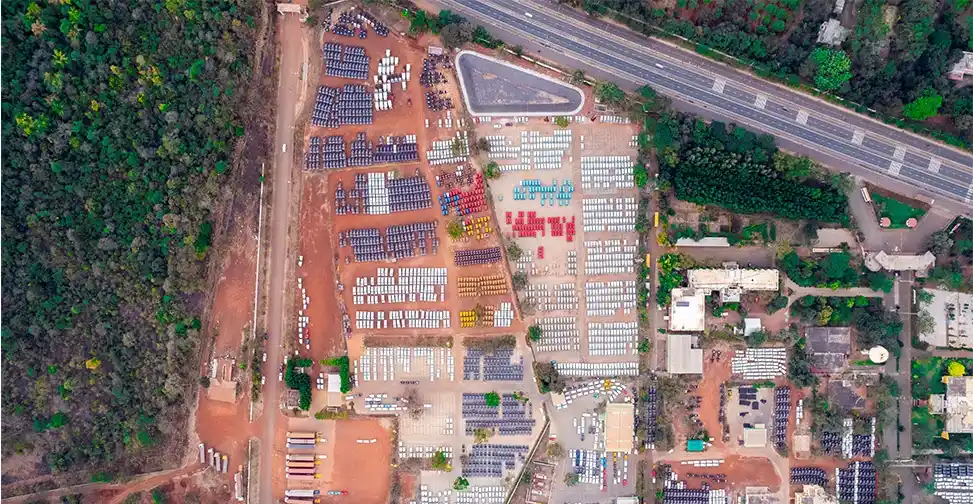The story of rising water tables and enchanting wedding bells
The story of rising water tables and enchanting wedding bells
Mahindra and Mahindra increased the water table in the Zaheerabad region significantly from a low of 137 m to a high of 18 m levels. This was done with the able support of the state government.
-

Email
-

Get link
-
.png)
Share
Executive Summary
Mahindra and Mahindra’s 20+ year-long journey in Zaheerabad led to transforming the drought-hit region and the challenges faced along with the able support of the state government. Several initiatives like rainwater harvesting, water treatment plants, check dams etc. were undertaken resulting in a positive impact on the water resource sustainability and well-being of the local community.
Initiative
The folklore has it that parents were skeptical about getting their daughters married in the Zaheerabad region due to water scarcity. What unfolds in the film is a narrative of how Mahindra and Mahindra reimagined a reversal of the tale, by raising the water level in the drought-hit region of Zaheerabad, from 137 m to 18 m.
Mahindra and Mahindra set up two plants at Zaheerabad, where the conditions of Biodiversity and Ecosystem were far from ideal, for water-intensive economic activity. The region, where agriculture takes center stage suffered from ground water levels as low as 137 m causing acute water scarcity.
Mahindra and Mahindra increased the water table in the Zaheerabad region significantly from a low of 137 m to a high of 18 m levels. This was done with the able support of the state government.
The threat of heavy variability in rainfall loomed large, with around 33% of annual rainfall due to 4-5 high rainfall events (>30 mm rainfall events) during monsoon. Water was integral to Mahindra’s plant operations and getting the plant to function in the water-scarce area was Mahindra and Mahindra’s foremost challenge. Alongside, the planet-positive philosophy of the Mahindra group has always been to promote water-positive practices in the surrounding areas in which it operates.
Rising Ground Water Table Levels
Against the backdrop of these goals, an integrated Watershed development project was undertaken. Mahindra and Mahindra initiated a biodiversity impact assessment by IBBI (Indian Business and Biodiversity Initiative) jointly with CII-ITC Center of Excellence for sustainable development. Based on the assessment, a Natural Capital Action Plan (NCAP) was drawn up with a holistic approach towards protecting Bio diversity, enhancing agricultural productivity, and impacting the livelihood of the community. One of the major outcomes of the assessment was a complex correlation between the automotive sector and the impact of operations on Biodiversity and ecosystem services, spread across the value chain. Factors such as Invasive species growth in the greenbelt area and a monoculture in the greenbelt that resulted in business risks for the plant added to the complexity.
Increasing water tables by enhancing groundwater recharge (RWHS), treating and utilising grey water, and promoting effective utilisation of groundwater resources were among the foremost action plans. Check dams, Rock fill dams, Field Bunding and BBF land management were prominent initiatives. Through the creation and enhancement of water structures, Mahindra and Mahindra increased the water table in the Zaheerabad region significantly from a low of 137 m to a high of 18 m levels.
Outcome:
While ensuring an uninterrupted supply of water to plant operations, the twin goals of increased agricultural productivity and sustainable livelihood have also been accomplished, leading to holistic community development for Zaheerabad.
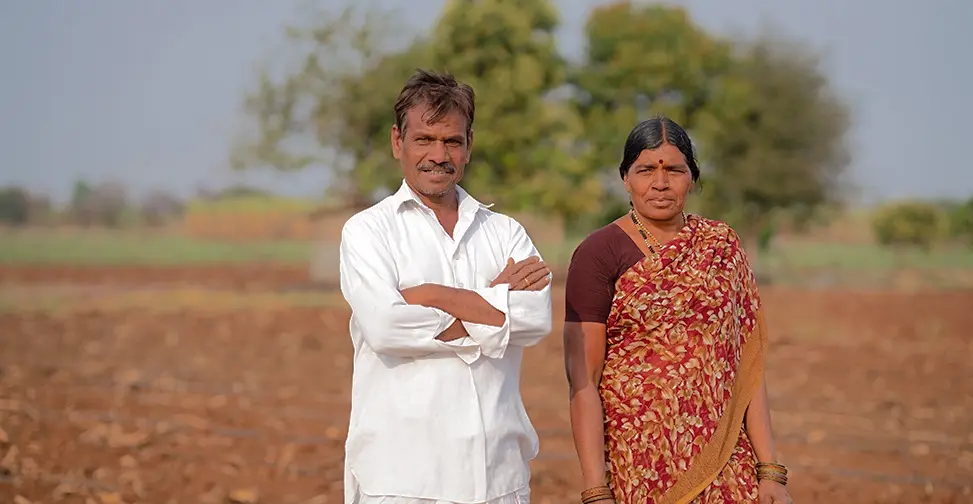
Mahindra and Mahindra‘s team has been working relentlessly for over 20 years along with the local community volunteers in ensuring timely planning, and execution of these activities. It has taken not just collaboration but precision in planning with READ (NGO) and ICRISAT, and Village Sarpanch to accomplish the larger mission of making a positive impact on the community in the drought-hit region. Zaheerabad is today home to a wide range of flora and fauna. Peacocks, Red-vented Bulbul, Indian Robin, Tailor Birds, Weaver, Tree Pie, Magpie-Robin, and Brahmini myna are just some of the delights that the community prides itself on.
Actions and Impact
Water Tables
-
Check dams at Buchinelly reduced the speed of the flowing water in the river system enabling water to infiltrate or seep into the ground, thus increasing the water level in 25-30 borewells, benefitting several farmers.
-
55 rainwater harvesting structures have been constructed since 2017 in the watershed; the total storage capacity created so far is 26450 m³. Structures harvest >100000 m³ of rainwater each year and have enhanced groundwater availability by 20-30% across 230-250 acres of surrounding farms.
-
Hybrid wastewater treatment treated household wastewater from the local community. Approx. 20000 litres per day was made available to grow fodder, sugarcane, and flower crops on about 25 acres.
-
Recurring impact: The total water harvested annually through ponds: 4700 kL. The total water reused/recycled annually is 38988 kL. Total groundwater recharge 28891 kL.
Tree planting
-
10000 trees planted so far in the region contribute to 2550 t of carbon sequestration per year with average carbon capture per tree at 25 t.
Crop productivity
-
Farmers' potential on best land and crop management practices was enhanced. This led not just to increased crop productivity. (Min income ₹ 5000 per acre) but also had a notable positive impact on the livelihoods of women farmers.
-
Farmers have witnessed yield increase ranging from 15-40% in the project village. About 115 women farmers gained an additional income of about ₹ 13 000 to ₹ 15 000 per acre due to soybean intercropping with pigeon peas by following the BBF land management, using improved seed and micronutrient application.
Income generation
-
Provided opportunities to increase the income of landless villagers through non-agricultural activities such as civil construction works, maintenance of wastewater units, and kitchen gardening plots.
-
About 15 to 20 non-agricultural workers earn an additional income of ₹ 45 000 each year through the maintenance of constructed wetland structures.
-
Nearly, 20 to 25 non-agricultural workers earn an additional income of ₹ 42 000 per person each year during the construction of rainwater harvesting structures.
Capacity Building
-
Built capacity of farmers on good agricultural practices, young women, and land less on income generation activities.
-
About 250 women have benefitted from the initiative. The impact created includes increased awareness of good agricultural practices, hands-on experience with science-based technologies, and using farm machines.
Invasive species
-
Identification of invasive species – Subabul tree affected areas were undertaken as a management priority and replaced with fruit and gulmohar trees, that consumed less water.
-
Afforestation of cleared area by ploughing cleared land and planting local and native tree and shrub species was undertaken, besides regular monitoring of the cleared area.
-
Greenbelt enrichment programs were undertaken both in existing greenbelt areas and in new areas by planting local and native trees and shrubs.
Envisioning the future
Our holistic roadmap envisages the establishment of field laboratories for students to undertake research in community watersheds. Besides, effective mechanisms are being developed to share knowledge about integrated watershed projects. Our vision is to improve the incomes of farming and non-farming communities at scale. While wedding bells ring once again at Zaheerabad, for the Mahindra Group, this is just the beginning of a larger journey to bring about water-positive practices across the country. Carbon Neutrality by 2040 is our goal.


.png)

.png)
